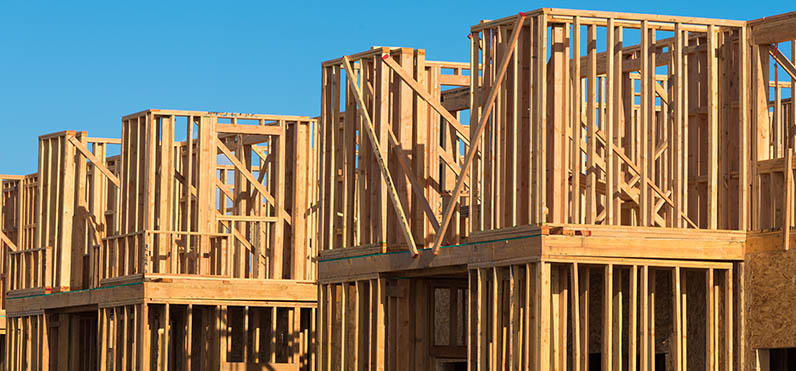The Supreme Judicial Court recently denied a developer’s application for further appellate review of a decision concerning the taxation of development rights, whereby the Appeals Court had ruled that a town may tax partially-constructed structures – existing on land that has been submitted to condominium status – which have not yet become lawful condominium units. R.I. Seekonk Holdings, LLC v. Board of Assessors of Seekonk, 91 Mass. App. Ct. 1104 (2017)(Rule 1:28) review denied 476 Mass. 1115 (2017). At first blush, the Appeals Court’s decision appears to run counter to the Massachusetts Condominium Act as well as its own previous decisions. Indeed, for the last seventeen years, it had generally been well accepted that land submitted to condominium status – which was subject to development rights – constituted common area of the condominium, which was exempt under G.L. c. 183A, § 14 from assessment. Spinnaker Island & Yacht Club Holding Trust v. Bd. of Assessors of Hull, 49 Mass.App.Ct. 20 (2000); see also First Main St. Corp. v. Bd. of Assessors of Acton, 49 Mass.App.Ct. 25 (2000). The Appeals Court, however, was able to differentiate the partially-constructed structures at issue in R.I. Seekonk based on (1) certain language in the condominium’s master deed concerning the subject development rights, and (2) the progress of construction performed.
The Massachusetts Condominium Act provides, in pertinent part, as follows:
Each unit and its interest in the common areas and facilities shall be considered an individual parcel of real estate for the assessment and collection of real estate taxes but the common areas and facilities, the building and the condominium shall not be deemed to be a taxable parcel.
G.L. c. 183A, § 14 (emphasis supplied).
The Appeals Court’s decision is problematic, to say the least.
In Spinnaker Island, the Appeals Court considered whether municipalities may tax rights retained by the declarant of a condominium to build additional phases of a condominium. Spinnaker Island, 49 Mass.App.Ct. at 20. In that case, the Assessors of Hull assessed real estate taxes on ten parcels of condominium land in which the declarant retained development rights but upon which units had never been “phased in” to the condominium. Id. at 21-22. The Appeals Court specifically held that these development rights, which had been reduced to the ten “expansion parcels,” are not subject to real estate taxation under G.L. c. 183A, § 14. Id. at 24. More specifically, the Appeals Court explicitly provided that “[b]y reason of the unambiguous exclusion in G.L. c. 183A, § 14, of common areas from taxation except to condominium unit owners in proportion to their percentage interests, the expansion parcels are not subject, as separate parcels, to real estate taxation.” Id.
In First Main Street, the Assessors of Acton – instead of assessing development rights as “real estate” under G.L. c. 59, § 2A, like the Assessors of Hull in Spinnaker Island – assessed development rights as “present interests” in real estate under G.L. c. 59, § 11. First Main St., 49 Mass.App.Ct. at 25. The Assessors of Acton contended that the development rights were severable from the underlying fee – that while the underlying fee was common area, the retained right to build on that land is not common area (and, therefore, was subject to taxation). Id. The Appeals Court rejected the Assessor’s argument and held that a declarant’s development rights are not taxable as “present interests” in real estate under G.L. c. 59, § 11. Id. at 28-30.
The R.I. Seekonk case involved the Greenbrier Village Condominium located in Seekonk, Massachusetts. When the Condominium was initially created in 2008, it consisted of eight units. Thirteen phases were subsequently added by phasing amendments – eventually creating thirty-one units at the Condominium. The Town of Seekonk assessed taxes against the declarant on structures that were under construction and prior to their addition to the Condominium as “units” – via master deed phasing amendment.
The Appeals Court held that these partially-constructed structures – unlike the development rights at issue in Spinnaker Island and First Main Street – were properly assessed by Seekonk. The Appeals Court seized upon the fact that language in the condominium’s master deed clearly defined the developer’s intent to exclude the structures from the condominium’s common area. R.I. Seekonk, 2017 WL 465322, *2. Indeed, the condominium’s master deed specifically provided as follows:
The Common Areas and Facilities of the Condominium (sometimes herein also referred to as the “Common Elements”) consist of the entire Land exclusive of the Units, all as hereinafter described and defined (and exclusive of any and all rights, interests and/or easements reserved by the Declarant), and any other property which is herein expressly included in the Common Areas and Facilities . . .
. . . Until such time as additional Phases are added to the Condominium by the recording of “Phasing Amendments” as described below, any buildings or portions thereof existing on the Land described in Schedule A (other than Phase 1), any other portions of the building(s) shown on the Site Plan, and any land not described in Schedule A shall not be part of the Condominium or subject to the Act, and shall be exclusively owned by, and shall be the exclusive responsibility of the Declarant or other owner thereof.
The Appeals Court in Spinnaker Island had specifically provided that “[o]nce it is recognized that the expansion parcels constitute common area of the condominium, it follows that they are not subject to real estate taxation because G.L. c. 183A, § 14…provides that ‘common areas and facilities…shall not be deemed to be a taxable parcel.’” Spinnaker Island, 49 Mass.App.Ct. at 23. The Appeals Court in R.I. Seekonk reasoned that – where this developer had gone to such lengths to specifically exclude the structures from the common area – the developer is not entitled to the tax exemption for common areas provided by G.L. c. 183A, § 14.
Unfortunately for many developers holding development rights, master deeds – for whatever reason – are commonly drafted with the exclusionary language seized upon by the Appeals Court in R.I. Seekonk. As a practical matter, developers should seek to avoid the inclusion of such language in their condominium documents and, instead, employ simple language concerning the land that has been submitted to condominium status (e.g., “The Common Elements are all portions of the Condominium other than the Units.”).
Perhaps more unfortunate for developers holding phasing rights is the fact that the Appeals Court in R.I. Seekonk went beyond distinguishing the case from Spinnaker Island based on the language in the master deed. The Appeals Court also held that the partially-constructed structures could be taxed as present interests in real estate, under G.L. c. 59, § 11. R.I. Seekonk, 2017 WL 465322, *2. The Court distinguished this case from First Main Street based on the fact that the structures “were in fact mostly completed” – whereas First Main Street involved assessed development rights where no construction had commenced. The Court provided that “as the First Main St. court reasoned, an unexercised development right could be converted into a present interest by initiating affirmative actions, such as ‘build[ing] the additional buildings and facilities.’”
Notably, the R.I. Seekonk Court failed to complete the quote from the First Main Street decision, which provided that the condominium developer must “build the additional buildings and facilities and amend the master deed, before the expansion phase land is the holder’s to deal with.” First Main St., 49 Mass.App.Ct. at 28 (emphasis supplied). It appeared that the Appeals Court, in First Main Street, recognized that in order to tax a development right as a present interest, the subject unit actually had to be phased into the condominium by recording an amendment to the master deed. The R.I. Seekonk Court, however, eschewed the necessity of having a legally-existing unit to tax – providing that a development right may be taxed once a structure is constructed on the property.
The Appeals Court’s decision is problematic, to say the least.
Essentially, towns may now tax condominium “units” that do not legally exist. If such a tax goes unpaid, what property interest will the town place a lien on? What property interest would be foreclosed upon? Will the town take common area land away from the unit owners of the condominium?
Additionally, the Appeals Court’s term “mostly completed” would seem to be open to broad interpretation. Can a structure be assessed once a developer has poured a foundation? Framed walls? Nailed roof shingles? It is unfortunate that the Court did not provide a stricter threshold than “mostly completed” (e.g., taxable as a present interest upon the issuance of a certificate of occupancy).
Also, towns typically tax common area proportionately to the unit owners of the condominium as “value added” to the condominium – in accordance with their percentage interest in the common area. Under the R.I. Seekonk decision, towns will essentially be able to (1) tax the unit owners in accordance with their percentage interest in the common areas, and (2) tax partially-constructed structures existing on the common areas. This would appear to be double taxation. The Appeals Court, in First Main Street, recognized this issue, providing “[a]s the unit owners have already been taxed for their interest in the common area land, the assessors may not tax another slice of the same real property to others.” First Main St., 49 Mass.App.Ct. at 29.
It is worth noting that, effective January 1, 2017, G.L. c. 59, § 11 was amended to provide local assessors with the discretion regarding whether to tax present interests in real estate. Previously, the statute authorized the imposition of a tax on a present interest upon written authorization from the Commissioner of Revenue. Accordingly, local assessors will now be able to tax structures on condominium property that – in their opinion – are “mostly completed”. A particularly aggressive town may now be emboldened to assess any partially-constructed structure on condominium property – whether it is ultimately to become a unit or some common area facility (e.g., a clubhouse).
The independent value of development rights, and the notion that a declarant of a condominium should be subject to taxation for same, has been acknowledged in the industry for more than three decades. Both the Uniform Condominium Act (“UCA”), which was most recently amended in 1980, and its successor act, the Uniform Common Interest Ownership Act (“UCIOA”) provide: “Any portion of the common elements for which the declarant has reserved any development right must be separately taxed and assessed against the declarant, and the declarant alone is liable for payment of those taxes.” UCA § 1-105(c) (1980); UCIOA § 1-105(c) (2014). As explained in Comment 2 to the UCA provision, “[e]ven if real estate subject to development rights is a part of the condominium and lawfully ‘owned’ by the unit owners in common, it is in fact an asset of the declarant … .’” UCA § 1-105(c), cmt. 2 (1980).
However, Massachusetts has its own unique condominium act codified at G.L. c. 183A, § 1 et seq., which has no comparable provision to that contained in the UCA and UCIOA. “Massachusetts has not adopted either the UCA or its successor, the Uniform Common Interest Ownership Act.” Drummer Boy Homes Ass’n, Inc. v. Britton, SJC-11969, 2016 WL 1191578, at *6 n.17 (2016). And while “the UCA may serve as a guide to the reasonableness of developer control of the structure, management and marketing of a condominium, it cannot override the existing tax law of Massachusetts. That is a task for the Legislature.” First Main St., 49 Mass.App.Ct. at 29-30 (citing Barclay v. DeVeau, 384 Mass. 676, 685 n.17 (1981)).
Until such time as the Legislature has determined whether it is appropriate to assess a condominium’s declarant for the value of its retained development rights, or partially constructed buildings on common area, this issue will likely find its way back to the appellate courts of the Commonwealth.


